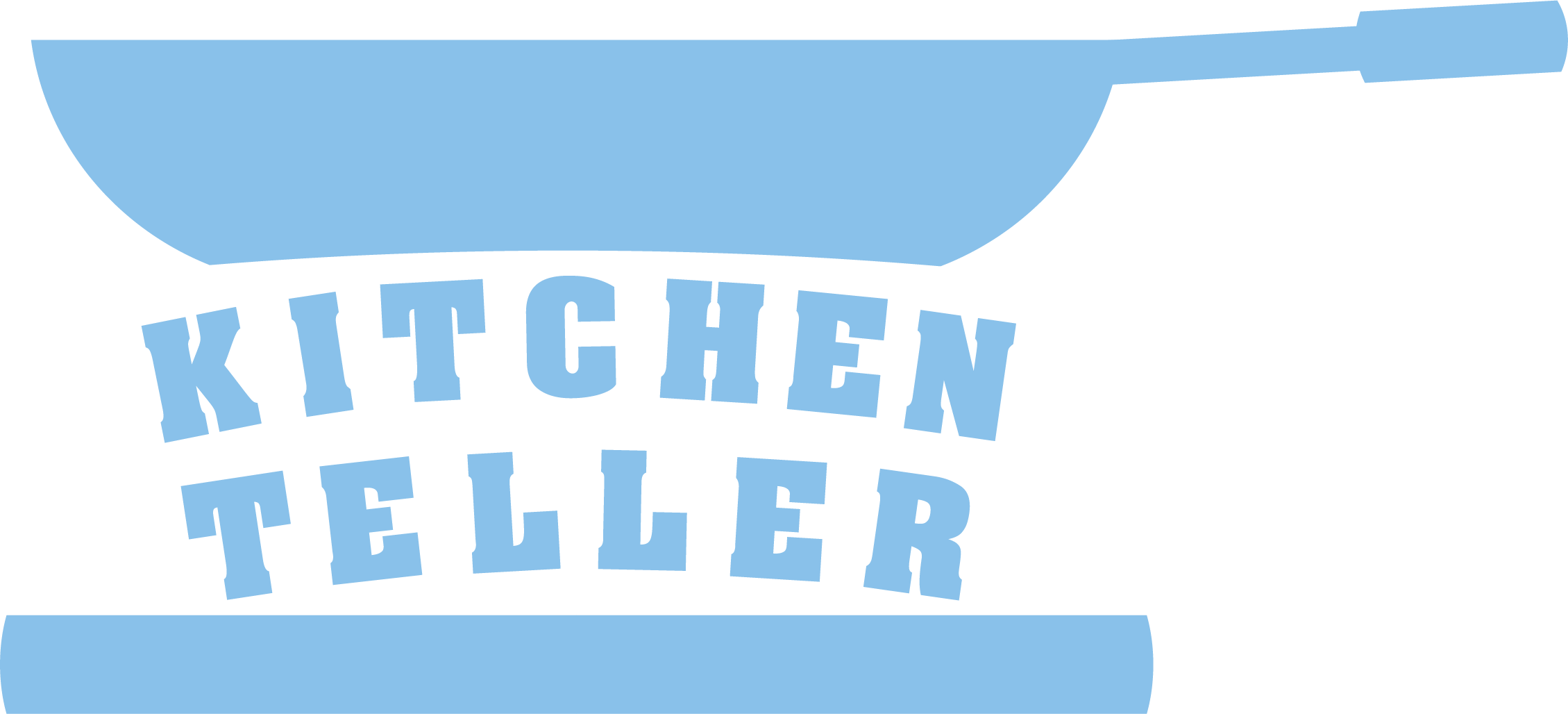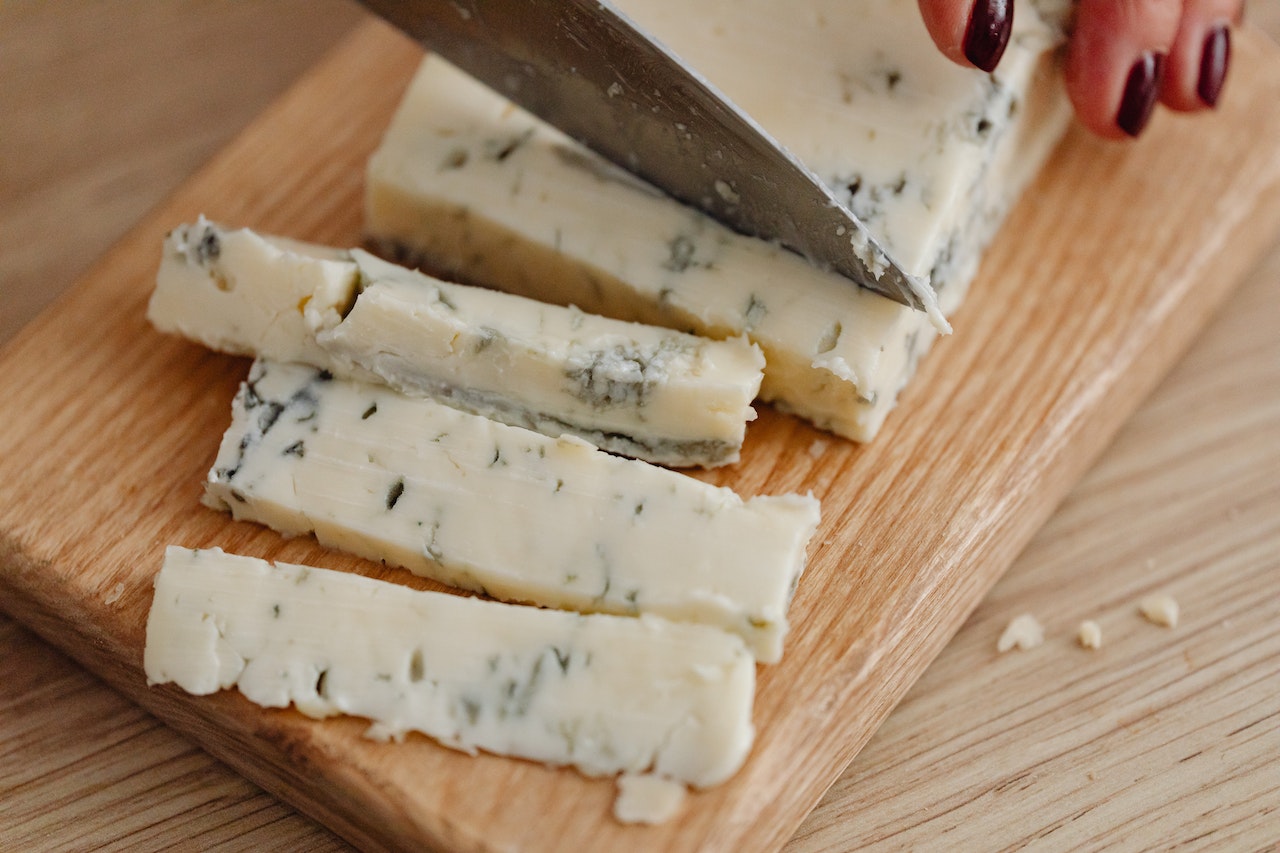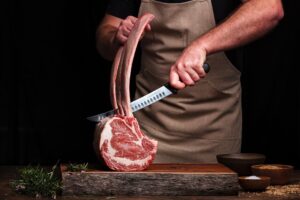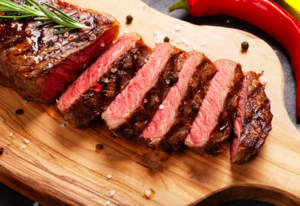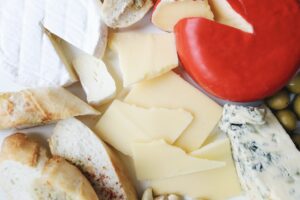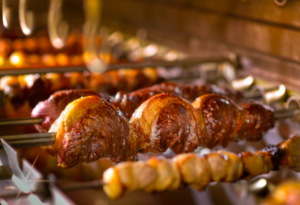No matter if you are a newbie or veteran of blue cheese, Gorgonzola Cheese is a must-try item among all blue cheese. As it is one of the iconic blues—another two are Roquefort from France and Stilton from England. Let’s see why this old Italian cheese captured millions of people across hundreds of years!
Table of Contents
Profile of Gorgonzola Cheese
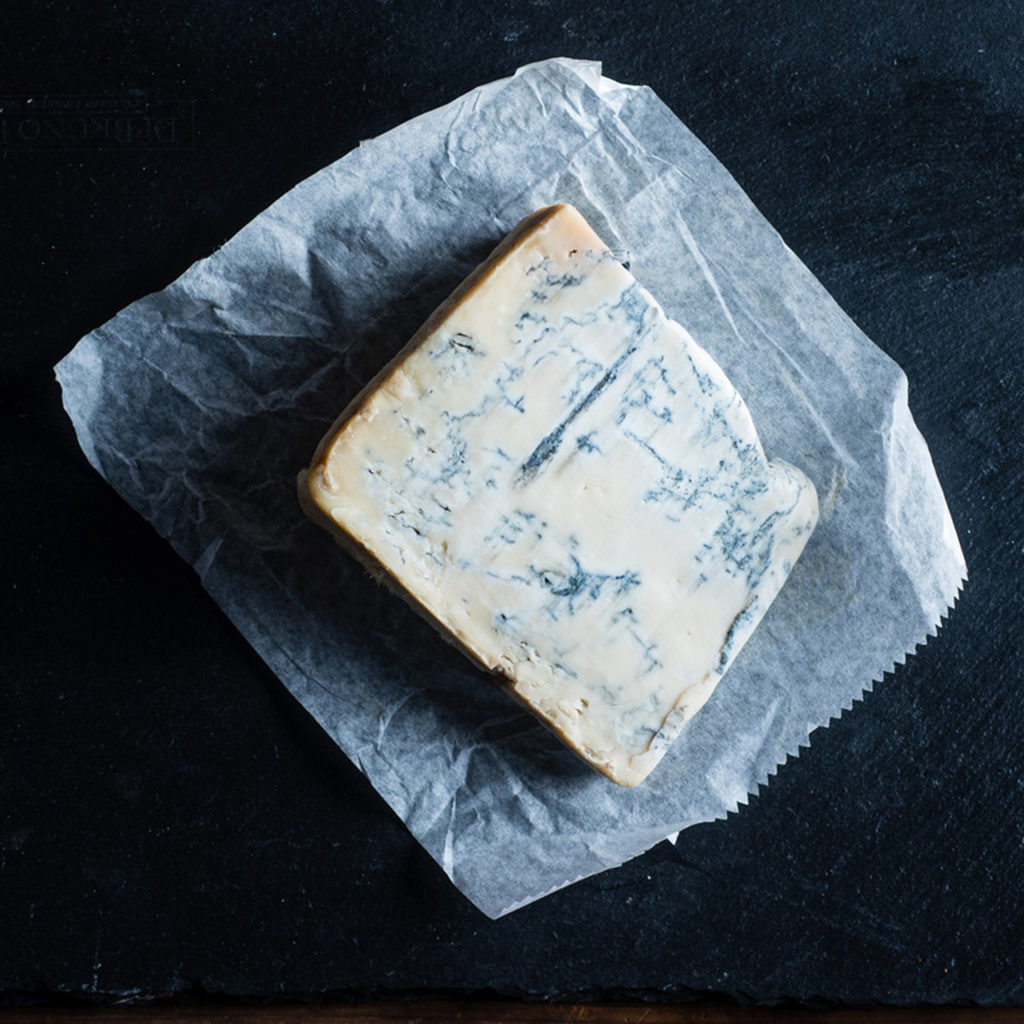
Milk Type: Cow
Mold: Penicillium glaucum
Pasteurised: Yes
Aging Time: 3-4 months
Texture: Soft
Country of Origin: Gorgonzola, Italy
Characteristics: Sharp, spicy and pungent flavor with strong smell; Notes of nuts and fruit
► Read More: How Cheese Is Made Step by Step? | Cheese 101
What Is Gorgonzola Cheese?
Gorgonzola is a type of Italian blue cheese. It’s made from cow’s milk and has a strong smell and a sharp, spicy taste. It gets its distinctive blue veins and sharp flavor from mold spores that are injected into the cheese during production. The mold spores create chemical reactions that break down fats in the cheese and produce the strong smell and flavor.
Generally, the cheesemaker ages it for 3-4 months to allow the flavor and aroma to fully develop. Having notes of nuts and fruit is usually how people describe Gorgonzola. It’s sharp but compared to other blues, its flavors are typically milder than most of the other blue cheeses. The older the cheese, the stronger the flavor.
What Does Gorgonzola Cheese Taste Like?

Gorgonzola cheese has a sharp, spicy and pungent taste. The cheese connoisseurs usually describe it as having earthy, creamy and savory flavors with notes of nuts and fruit. The strong blue mold imparts a noticeable tangy and salty flavor with a hint of bitterness.
The taste can vary depending on the age and type, but in general it has a very robust and full-flavored taste that is quite distinctive and complex.
Due to its bold taste, it’s best to enjoy in small amounts, crumble or spread onto other foods such as pasta and salads.
Where Does Gorgonzola Cheese Come From?
Gorgonzola cheese originated in northern Italy, in the Lombardy region near the town of Gorgonzola. It is named after this town, which is located just east of Milan. It has been produced in this region since the 11th century. It’s one of the oldest types of blue cheese and one of the Italian delicacies.
Today, this old Italian cheese is still mainly produced in northern Italy, especially in the Piedmont and Lombardy regions. It has a Protected Designation of Origin status (PDO; DOP in Italian), which means only cheese produced in specific areas of Italy can be called “Gorgonzola”. It guarantees authenticity.
Is Gorgonzola Blue Cheese?
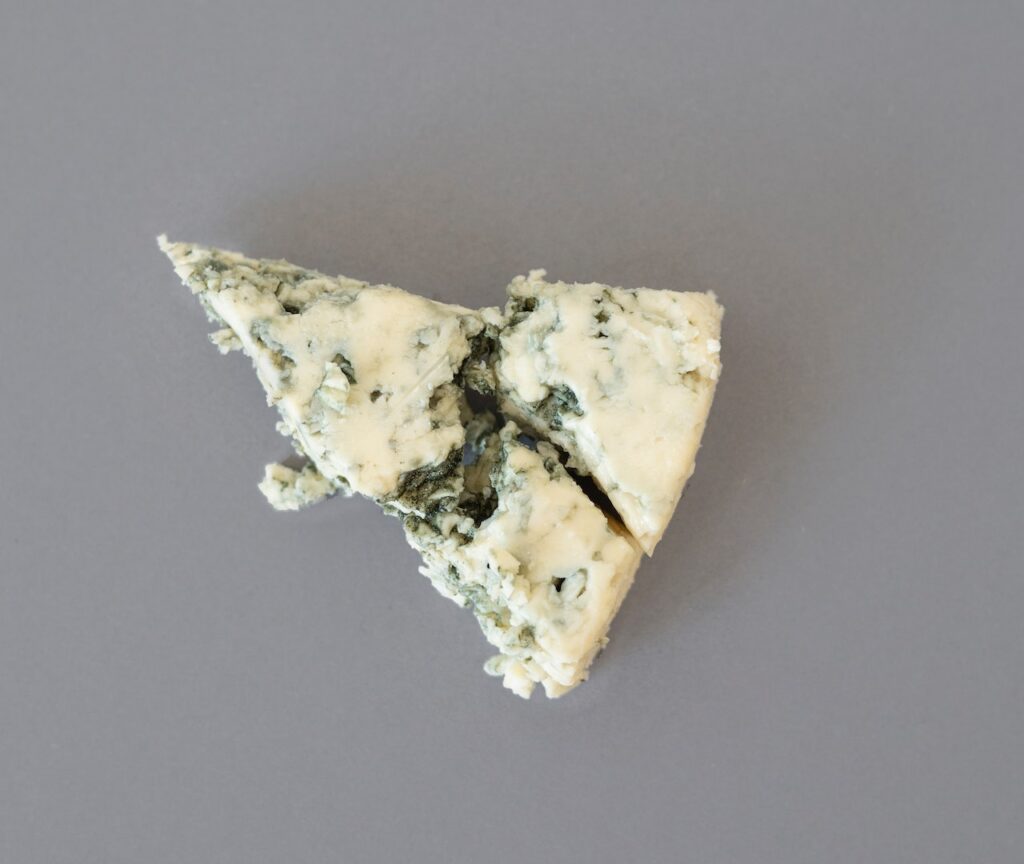
Yes, Gorgonzola is a type of blue cheese. Blue cheeses get their distinctive veins and sharp flavor from mold spores. The mold spores break down fats in the cheese, creating the characteristic smell, flavor, and blue veins.
Other well-known types of blue cheese include Roquefort, Stilton, and Danish Blue. So while Gorgonzola is a specific type of blue cheese, all blue cheeses share the common characteristic—blue veins, distinctive strong smell and flavor.
► Read More: What Is Blue Cheese? How It Is Made? | FAQs of Blue Cheese
Substitute for Gorgonzola Cheese
Some good substitutes include:
a) Roquefort Cheese
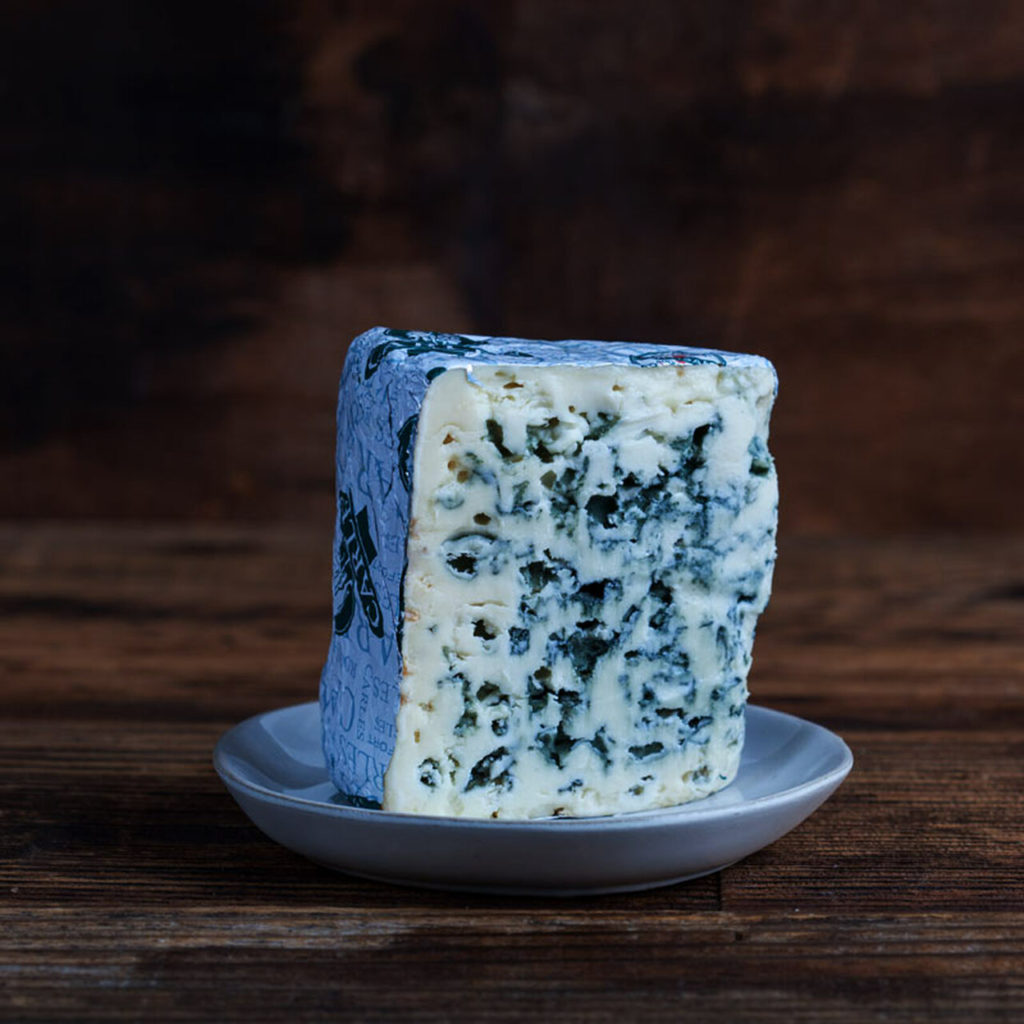
Roquefort is another tangy and pungent blue cheese that can work as a substitute for Gorgonzola. It has a similar sharp and salty flavor, though Roquefort tends to be stronger in flavor.
b) Stilton Cheese

Stilton is an English blue cheese which is a nice substitution. It has a slightly sweet flavor and creamy texture with strong blue veins. Stilton is less tangy than Gorgonzola but has a robust and pungent taste.
c) Danish Blue Cheese

Danish Blue cheese is another milder and creamier blue cheese. It has noticeable blue veins and a tangy, salty flavor that is less sharp than Gorgonzola.
d) Mascarpone Cheese
For a milder substitute, you can use Mascarpone cheese. It has a soft, creamy texture with a slightly tangy and buttery flavor. Mascarpone won’t provide the blue cheese flavor of Gorgonzola but can work in some recipes where the blue cheese flavor is not essential.
► Read More: 11 Best Types of Blue Cheese From Mild to Sharp
If you buy on Di Bruno Bros, click HERE to check the latest discount!
If you buy on Gourmet Food Store.com, use our unique discount code: KitchenTeller on the Basket page or the Payment page during checkout to enjoy 10% OFF!
Is Gorgonzola Cheese Gluten Free?
Gorgonzola cheese itself is naturally gluten free. Gluten is a protein found in grains like wheat, barley and rye. The ingredient of making Gorgonzola—cow’s milk does not contain any glutenous grains.
However, some Gorgonzola products may contain gluten if they use gluten containing ingredients as additives or flavorings. So to be safe, always check the ingredient label to ensure there are no gluten containing additives.
Is Gorgonzola Cheese Safe During Pregnancy?
It is best for pregnant women to avoid or limit intake of Gorgonzola and other blue-veined cheeses. If eating it, make sure it is pasteurized and only eat it cooked or in small amounts. As always, consult your doctor if you have any concerns.
Summary
Gorgonzola cheese is one of the most popular blue cheeses. If you love eating blues, you must try it once! Not everyone accepts its sharp and strong flavor, choose some other types of blues with milder flavor.
► Read More: 20+ Types of Cheese (Soft to Hard, Mild to Sharp) | Ultimate Guide
